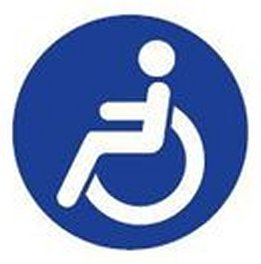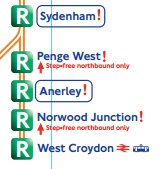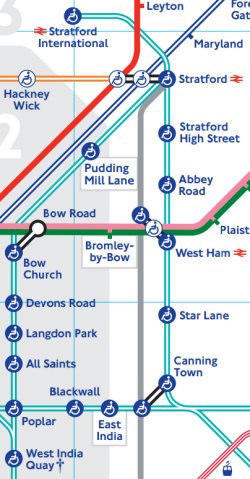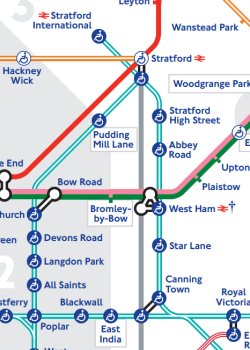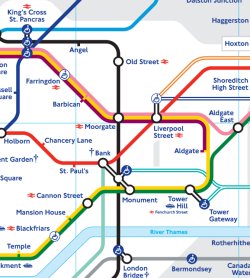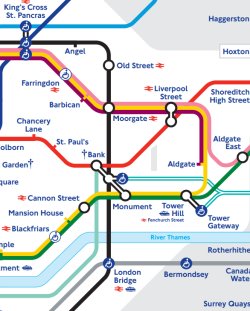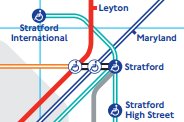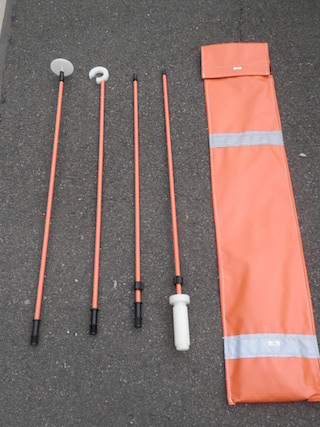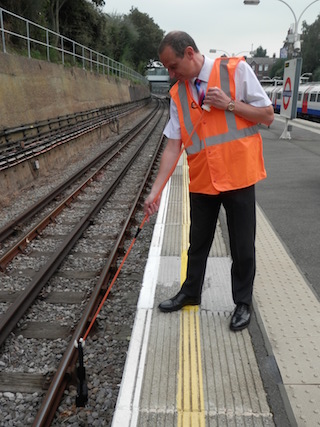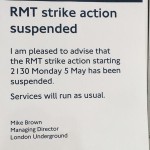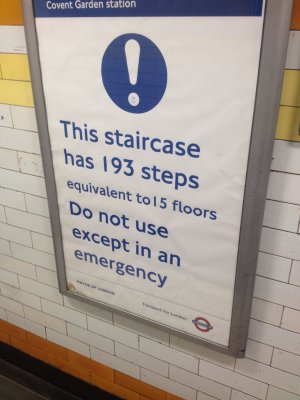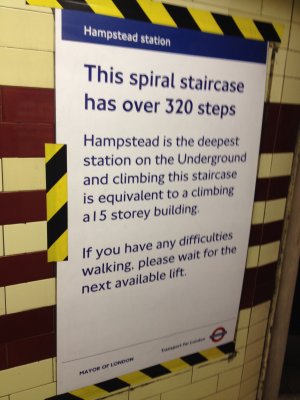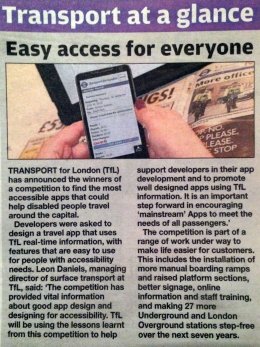When the Greenford Inclinator (sorry, Incline lift) opened on the Underground network last week, the official line from the press release was that there are now 67 Underground stations now have step free access.
As accessiblity is something we’re quite keen on getting right in Station Master, we thought we’d have a quick count and check, because it felt like it might be slightly more.
Here’s what we found when looking at the official TfL Step Free Tube Map.
The Underground has 69 fully step free stations. They are:
Acton Town, Barking, Bermondsey, Blackfriars, Brixton, Canning Town, Caledonian Road, Chalfont & Latimer, Canada Water, Canary Wharf, Chesham, Chorleywood, Dagenham Heathway, Earl’s Court, East Ham, Edgware, Epping, Elm Park, Farringdon, Finchley Central, Fulham Broadway, Golders Green, Green Park, Greenford, Hainault, Hammersmith D&P, Hammersmith C&H, Harrow & Wealdstone, Hillingdon, Heathrow 123, Heathrow 4, Heathrow 5, Hounslow West, Hendon, High Barnet, Hounslow East, Kensington (Olympia), Kingsbury, Kings Cross, Kilburn, Kew Gardens, London Bridge, Morden, North Greenwich, Oakwood, Paddington, Pinner, Richmond, Roding Valley, Stanmore, Stratford, Sudbury Town, Southfields, Southwark, Tottenham Hale, Upney, Uxbridge, Waterloo (Jubilee), Upminster, Wembley Park, Wembley Central, West Finchley, Westminster, West Ham (Jubilee), Willesden Junction, Wimbledon, Woodford, Wood Lane, Woodside Park,
So that’s two more than the official TfL count of 67 – why the difference? Well, that could be because they might Hammersmith as being one station, where as we would argue that it’s two separate stations. Or consider that Waterloo is only fully step-free accessible to the Jubilee Line … hang on, there’s a strange anomalie in that due to the Jubilee Line lifts you can get to the southbound platforms step free at Waterloo Bakerloo, but all the would let you do is make a cross-platform interchange at Lambeth North, and head north up the Bakerloo and you could go to Baker Street and change to the northbound Jubilee Line, but the earliest a wheelchair users could get off the Bakerloo Line would be at Willesden Junction.
But that brings to our attention other stations that are like this – where you can get access to an Underground train, but admittedly (due to the configuration of a station) only in one direction. Which is the following stations:
Amersham, Barkingside, Borough, Cannon Street, Debden, Elephant & Castle, Euston Square, Liverpool Street, Rickmansworth, Ruislip, South Woodford, Theydon Bois, Waterloo (Bakerloo) West Brompton.
That’s 14 more stations, except Waterloo is a repeat of the Jubilee Line, so it adds 13 more to the total – meaning that there are 82 stations out of 270 on the Underground that have step free access, that’s 30.3%, just under a third.
Want to make things a bit more tricky to get your head around? Of course you do… The Tube Map should no longer really be called that as the real count of numbers of stations on the map is now at 408, a third of which are no longer Underground services, it has Overground, DLR and TfL Rail too. The DLR is of course totally step free from it’s construction but how is the Overground holding up?
We’ve counted 45 Overground stations that are fully accessible step-free in both directions, they are:
Anerley, Acton Central, Brockley, Bush Hill Park, Caledonian Road and Barnsbury, Camden Road, Canonbury, Cheshunt, Chingford, Clapham Junction, Carpenders Park, Crystal Palace, Dalston Junction, Denmark HIll, Edmonton Green, Euston, Emerson Park, Enfield Town, Forest Hill, Gospel Oak, Hampstead Heath, Highams Park, Highbury and Islington, Honor Oak Park, Harringay Green Lanes, Hackney Wick, Homerton, Hackney Central, Haggerston, Hoxton, Imperial Wharf, New Cross Gate, New Cross, Romford, Queens Road Peckham, Shepherds Bush, Shoreditch High Street, South Acton, Sydenham, Upper Holloway, Watford Jcn, Walthamstow Queens Road, Walthamstow Central, West Croydon.
Kew, Richmond, Olympia, West Brompton are also step free, but are shared with Underground stations, so have already been counted.
The Overground also has six stations where step-free access is available in one direction only, namely:
Kensal Rise, Headstone Lane, Hatch End, Penge West, Norwood Junction, Hackney Downs
And as it’s on the TfL services map with its 408 stations we can’t ignore the step-free TfL Rail services too, which are: Romford (also Overground), Chadwell Heath, Brentwood, Shenfield
So, in summary…
There are 69 (not 67) step-free station on the Underground. 82 if you include the the ones which have it in one direction only. Plus the Overground brings 51 more to that total, Tfl Rail adds three more, and of course don’t forget the 45 stations on the DLR, that brings our grand total up to … 99 stations out of the 408 on the map (which is 24%, call it a quarter) that have step-free access.
We’ll update this post as more get added to the network, Tower Hill and Vauxhall should be getting their lifts next …
